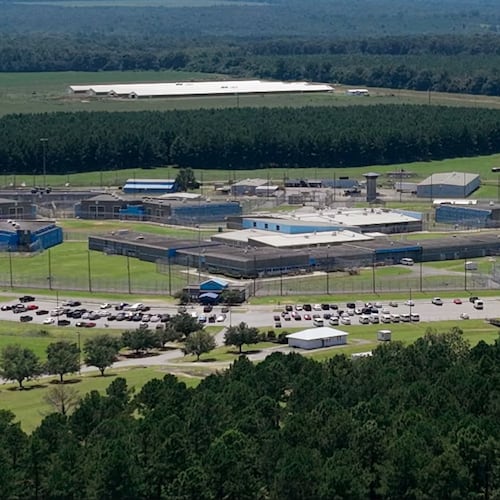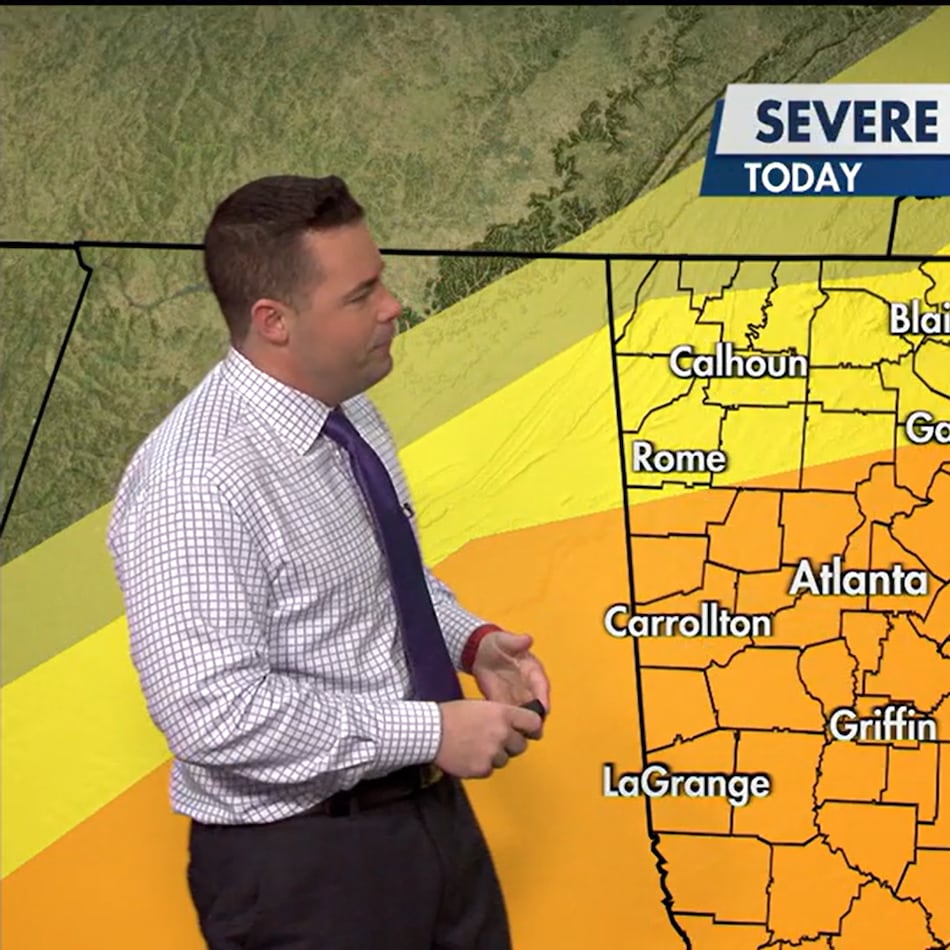Four people found shot to death in an RV in a small Mojave Desert community in California. A mother, her three teenage children and their two teenage friends — all shot and killed in rural Oklahoma by the woman’s husband who then killed himself. Two nights before those Sunday incidents, a Texas man shot and killed five of his neighbors, including an 8-year-old boy, after they asked him to stop firing off rounds in his yard.
Before the deadly shooting at a Texas outlet mall this past weekend, there were deadly shootings with multiple victims reported in the U.S. just the previous weekend.
Between those two weekends was more grim news: Last Wednesday, a Florida mom and her three children were shot and killed at their Lake Wales apartment complex.
While classified as a mass shooting rather than a mass killing, gunfire at a Midtown Atlanta medical office that same day, May 3, left a mother dead and four other women injured.
And a day later in South Georgia, authorities were investigating an apparent triple-murder-suicide in which victims were found at three different locations, including the McDonald’s in Moultrie.
According to a database maintained by The Associated Press and USA Today in partnership with Northeastern University, the toll so far from mass killings in the U.S. in 2023 is the most during the first four months of the year since data was first recorded in 2006.
At the end of April, the numbers exceeded the record set in 2009 when 93 people were killed in 17 incidents in the same time frame. Only a week into May, that number is now over 100 deaths amid at least 20 mass killings.
The number killed is a fraction of the total number of people who died by homicide for the year. The database counts killings involving four or more fatalities, not including the perpetrator, the same standard as the FBI, and tracks a number of variables for each.
“Nobody should be shocked,” said Fred Guttenberg, whose 14-year-old daughter, Jaime, was one of 17 people killed at a Parkland, Florida, high school in 2018. “I visit my daughter in a cemetery. Outrage doesn’t begin to describe how I feel.”
The Parkland victims are among the 2,851 people who have died in mass killings in the U.S. since 2006, according to the database.
Another somber trend: U.S. gun deaths among children have increased. Between 2019 and 2021, the number of children and teens killed by bullets increased 50% in the United States, according to a national study by Pew Research.
Mass killings are happening with staggering frequency this year: an average of about one a week, according to an analysis of The AP/USA Today data.
The violence has erupted from coast to coast and it has been sparked by a range of motives. Murder-suicides and domestic violence; gang retaliation; school shootings; and workplace vendettas. All have taken the lives of four or more people at once since Jan. 1.
Yet barriers to change remain. The likelihood of Congress reinstating a ban on semi-automatic rifles appears far off, and the U.S. Supreme Court last year set new standards for reviewing the nation’s gun laws, calling into question firearms restrictions across the country.
The pace of mass shootings so far this year doesn’t necessarily foretell a new annual record. In 2009, the bloodshed slowed and the year finished with a final count of 32 mass killings and 172 fatalities. Those figures just barely exceed the averages of 31.1 mass killings and 162 victims a year, according to an analysis of data dating back to 2006.
Gruesome records have been set within the last decade. The data shows a high of 45 mass killings in 2019 and 230 people slain in such tragedies in 2017. That year, 60 people died when a gunman opened fire over an outdoor country music festival on the Las Vegas Strip. The massacre still accounts for the most fatalities from a mass shooting in modern America.
“Here’s the reality: If somebody is determined to commit mass violence, they’re going to,” said Jaclyn Schildkraut, executive director of the Rockefeller Institute of Government’s Regional Gun Violence Research Consortium. “And it’s our role as society to try and put up obstacles and barriers to make that more difficult.”
But there is little indication at either the state or federal level — with a handful of exceptions — that many major policy changes are on the horizon.
Some states have tried to impose more gun control within their own borders. Last month, Michigan Gov. Gretchen Whitmer signed a new law mandating criminal background checks to purchase rifles and shotguns, whereas the state previously required them only for people buying pistols. And last week, Washington Gov. Jay Inslee signed a ban on certain kinds of semi-automatic rifles into law. But it faces a federal court challenge.
Other states are experiencing a new round of pressure. In conservative Tennessee, protesters descended on the state Capitol to demand more gun regulation after the March shooting at the Nashville school.
At the federal level, President Joe Biden last year signed a milestone gun violence bill, toughening background checks for the youngest gun buyers, keeping firearms from more domestic violence offenders and helping states use red flag laws that enable police to ask courts to take guns from people who show signs they could turn violent.
Despite the blaring headlines, mass killings are statistically rare, perpetrated by just a handful of people each year in a country of nearly 335 million. And there’s no way to predict whether this year’s events will continue at this rate.
Sometimes mass killings happen back-to-back — like in January, when deadly events in California occurred just two days apart — while other months pass without bloodshed.
“We shouldn’t necessarily expect that this — one mass killing every less than seven days — will continue,” said Northeastern University criminologist James Alan Fox, who oversees the database. “Hopefully it won’t.”
Still, experts and advocates decry the proliferation of guns in the U.S. in recent years, including record sales during the first year of the COVID-19 pandemic.
“We have to know that this isn’t the way to live,” said John Feinblatt, president of Everytown for Gun Safety. “We don’t have to live this way. And we cannot live in a country with an agenda of guns everywhere, every place and every time.”
Jaime Guttenberg would be 19 years old now. Her father now spends his days as a gun control activist.
“America shouldn’t be surprised by where we are today,” Guttenberg said. “It’s all in the numbers. The numbers don’t lie. But we need to do something immediately to fix it.”
This Associated Press story was originally published May 3. The Atlanta Journal-Constitution updated with details on the deadly shootings since the initial report.
MASS KILLINGS THIS YEAR
Jan. 4 Enoch, Utah: 7 killed, 0 injured
Jan. 7 High Point, N.C.: 4 killed, 0 injured
Jan. 13 Cleveland, Ohio: 4 killed 1 injured
Jan. 16 Goshen, Calif.: 6 killed, 0 injured
Jan. 21 Monterey Park, Calif.: 11 killed 9 injured
Jan. 23 Half Moon Bay, Calif.: 7 killed, 1 injured
Feb. 17 Arkabutla, Miss.: 6 killed, 1 injured
Feb. 22 Daphne, Ala.: 4 killed, 0 injured
March 1 Cocoa, Fla.: 4 killed, 0 injured
March 10 Miami Lakes, Fla.: 4 killed, 0 injured
March 12 Dallas, Texas: 4 killed, 0 injured
March 14 Birmingham, Ala.: 4 killed, 0 injured
March 21 Sumter, S.C.: 4 killed, 0 injured
March 27 Nashville, Tenn.: 6 killed, 0 injured
April 10 Louisville, Ken.: 5 killed, 8 injured
April 15 Dadeville, Ala.: 4 killed, 32 injured
April 18 Bowdoin, Maine: 4 killed, 3 injured
April 28 Cleveland, Texas: 5 killed, 0 injured
April 30 Henryetta, Oklahoma: 7 killed, 0 injured
April 30 Mojave, Calif.: 4 killed, 0 injured
May 3 Lake Wales, Fla.: 4 killed, 0 injured
May 6 Allen, Texas: 8 killed, 7 injured
Source: Associated Press, Washington Post
Credit: TNS
Credit: TNS
About the Author
Keep Reading
The Latest
Featured



